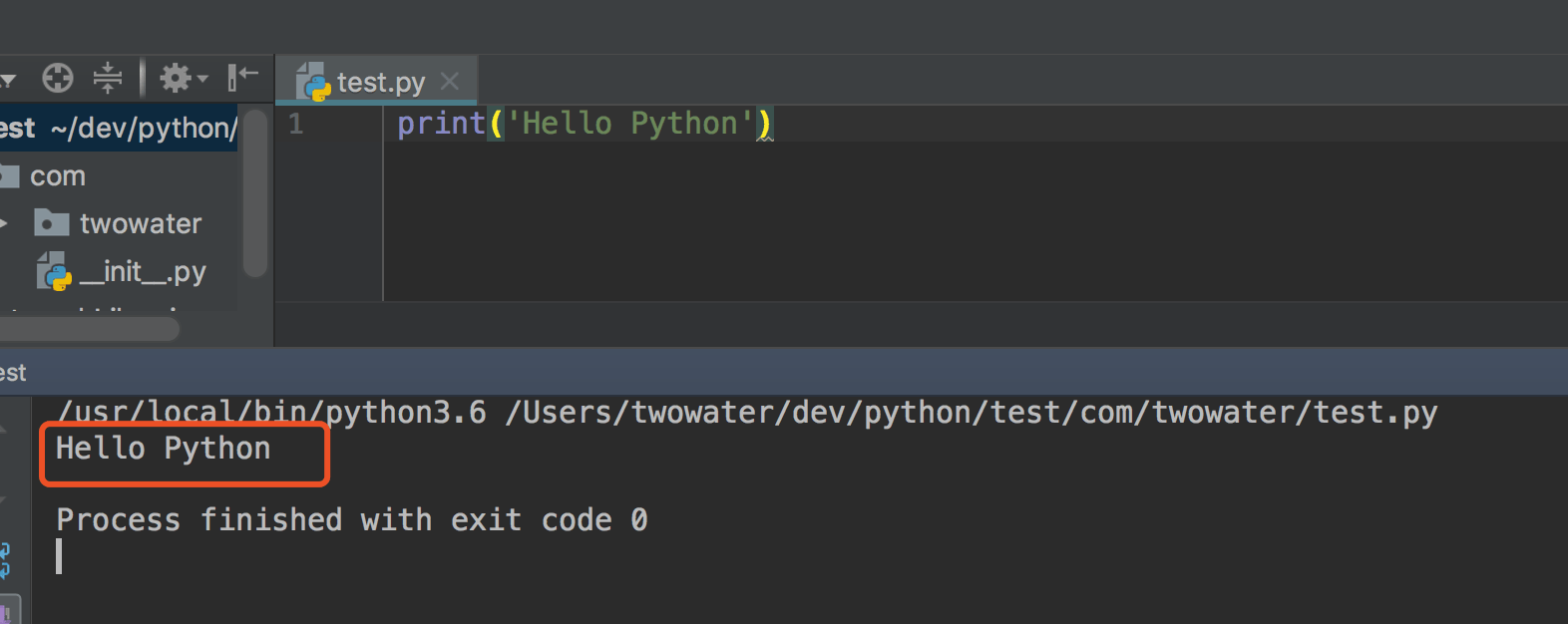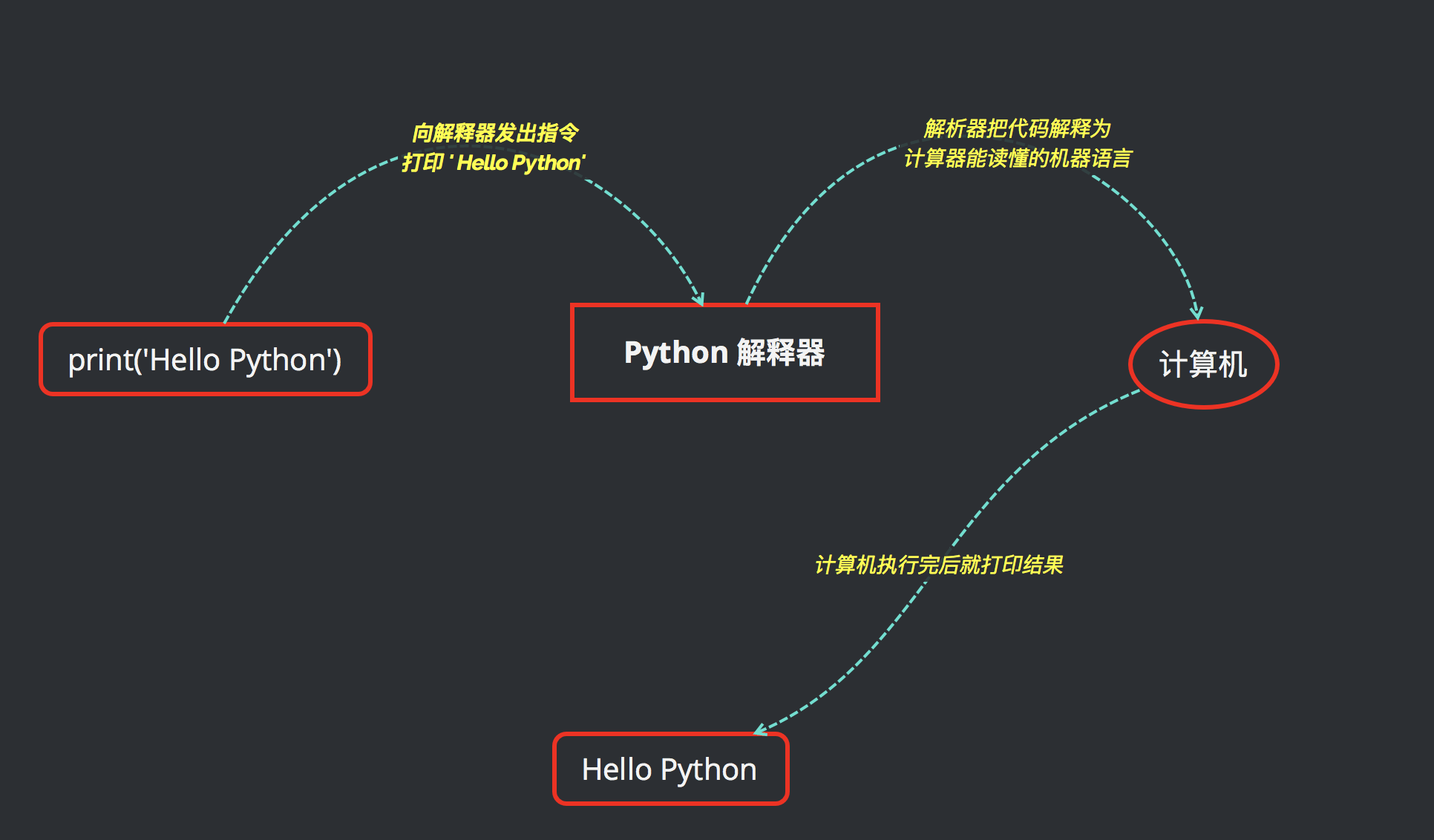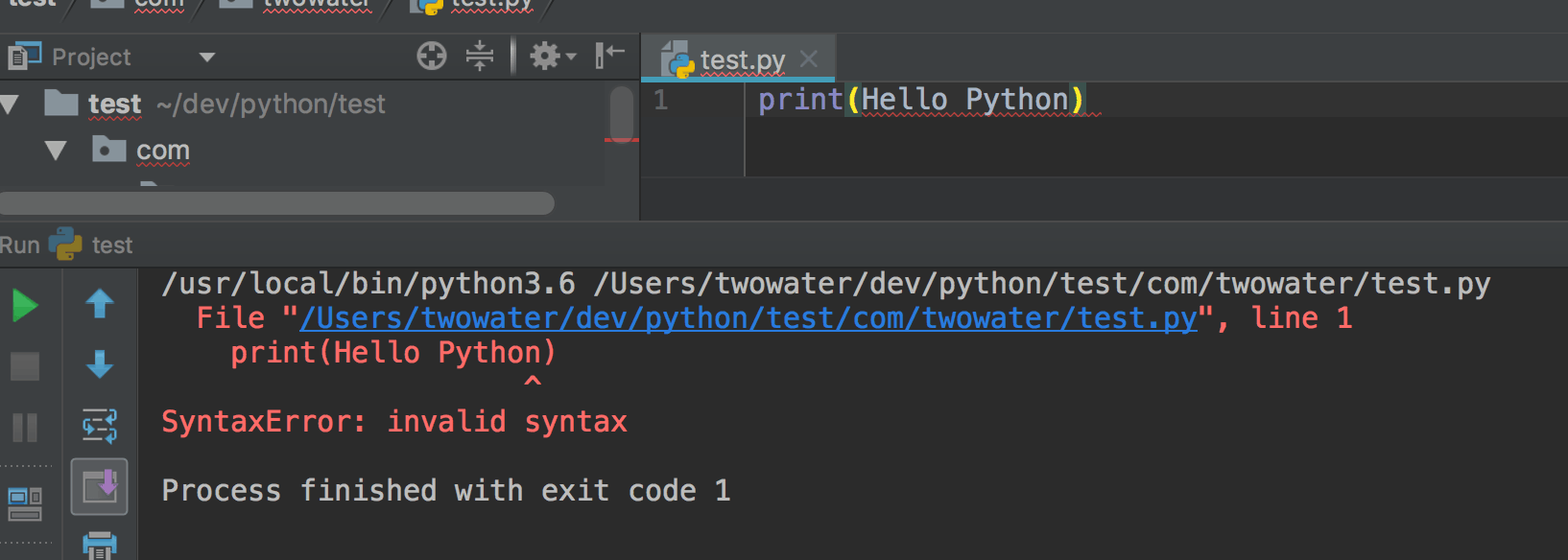mirror of https://github.com/TwoWater/Python
53 lines
1.6 KiB
Markdown
53 lines
1.6 KiB
Markdown
# 二、print() 函数 #
|
||
|
||
这里先说一下 `print()` 函数,如果你是新手,可能对函数不太了解,没关系,在这里你只要了解它的组成部分和作用就可以了,后面函数这一块会详细说明的。
|
||
|
||
`print()` 函数由两部分构成 :
|
||
|
||
1. 指令:print
|
||
2. 指令的执行对象,在 print 后面的括号里的内容
|
||
|
||

|
||
|
||
而 `print()` 函数的作用是让计算机把你给它的指令结果,显示在屏幕的终端上。这里的指令就是你在 `print()` 函数里的内容。
|
||
|
||
比如在上一章节中,我们的第一个 Python 程序,打印 `print('Hello Python')`
|
||
|
||

|
||
|
||
它的执行流程如下:
|
||
|
||
1. 向解释器发出指令,打印 'Hello Python'
|
||
2. 解析器把代码解释为计算器能读懂的机器语言
|
||
3. 计算机执行完后就打印结果
|
||
|
||

|
||
|
||
可能这里有人会问,为什么要加单引号,直接 `print(Hello Python)` 不行吗?
|
||
|
||
如果你写代码过程中,有这样的疑问,直接写一下代码,自己验证一下是最好的。
|
||
|
||

|
||
|
||
显然,去掉单引号后,运行结果标红了(报错),证明这是不可以的。
|
||
|
||
主要是因为这不符合 Python 的语法规则,去掉单引号后, Python 解释器根本没法看懂你写的是什么。
|
||
|
||
所以就报 ` SyntaxError: invalid syntax` 的错误,意思是:语法错误。说明你的语句不合规则。
|
||
|
||
|
||
|
||
|
||
|
||
|
||
|
||
|
||
|
||
|
||
|
||
|
||
|
||
|
||
|
||
|